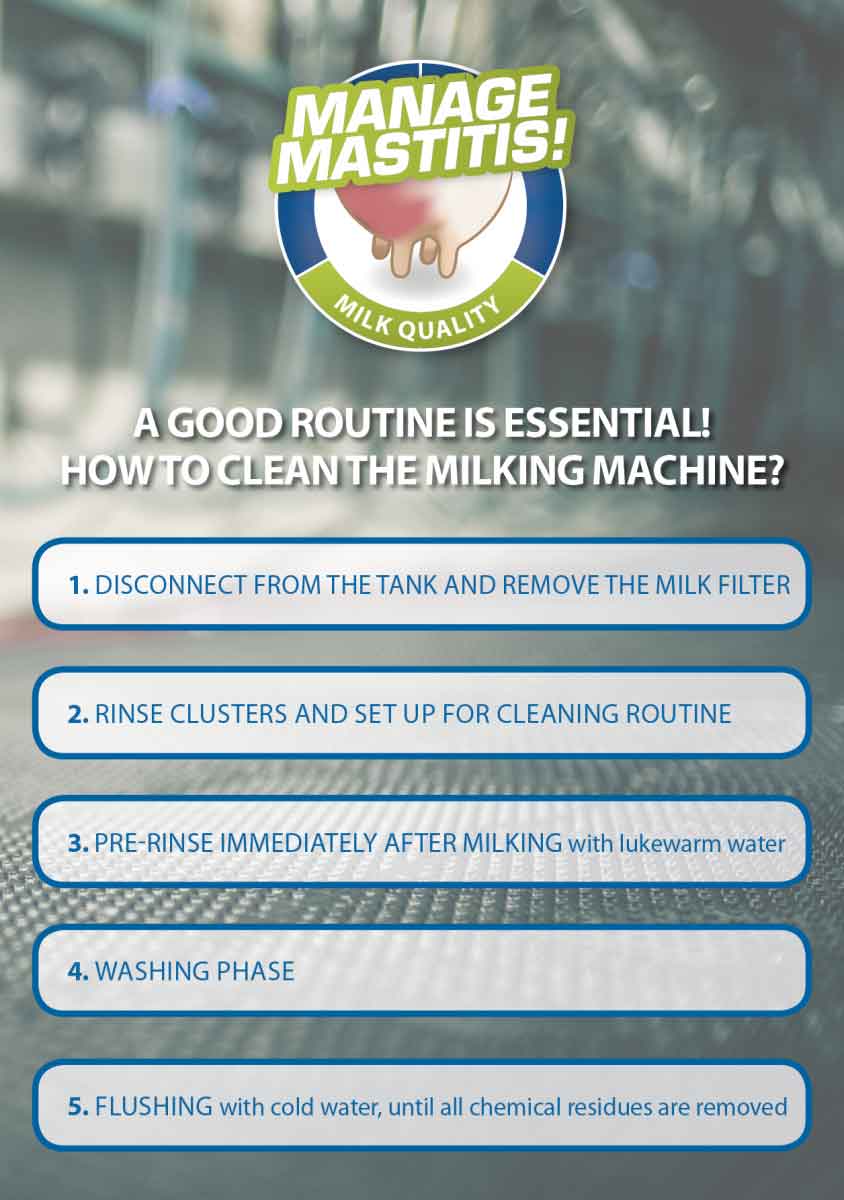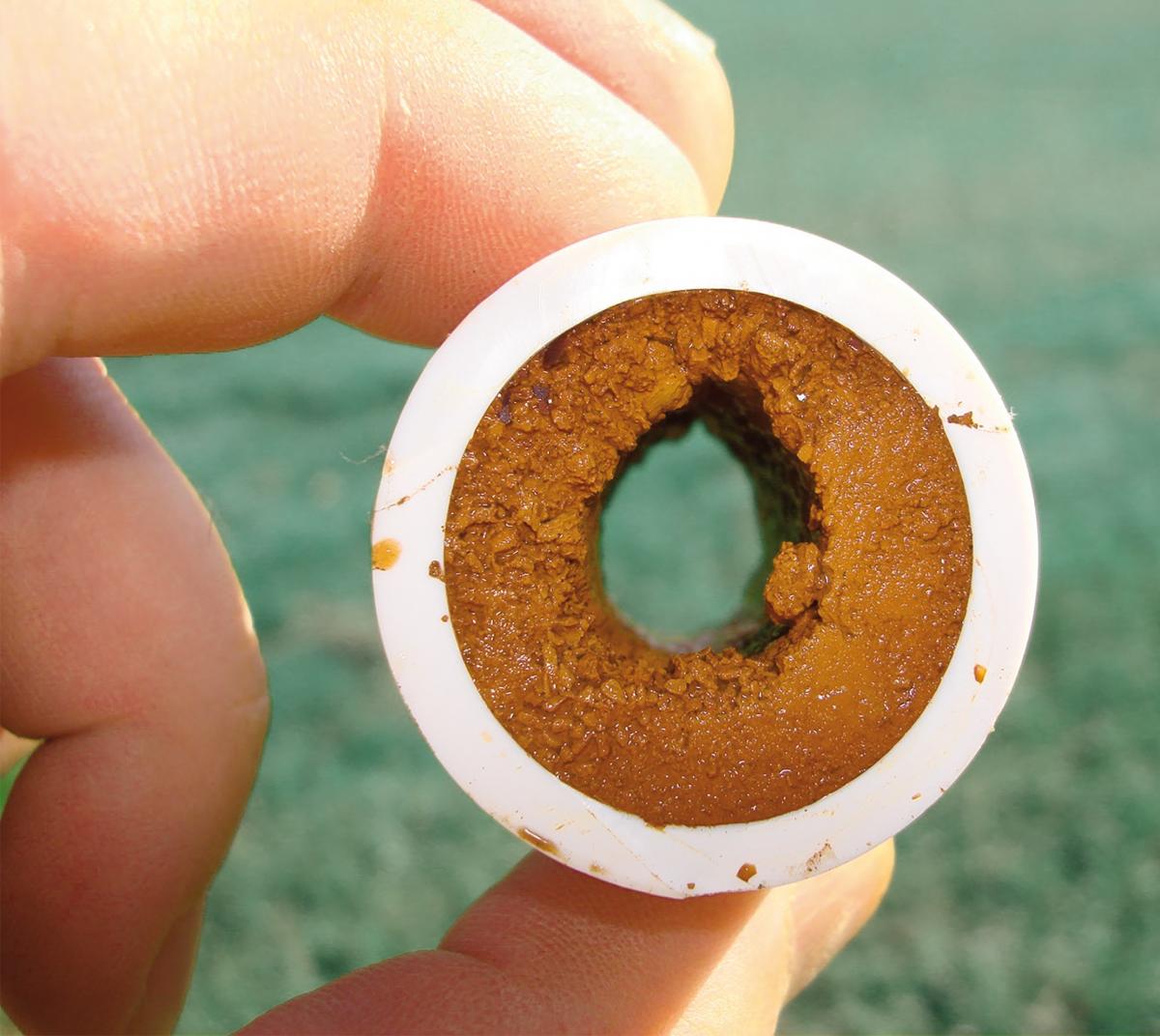The milk contact surfaces of milking and cooling equipment are a main source of milk contamination and frequently the principal cause of consistently high bacterial counts. Simple, inexpensive cleaning and disinfecting routines can virtually eliminate this source of contamination.
Milking Machine
Use an alkaline cleaner for pipes and tanks and alternate with an acid product.
An alkaline product removes fats and proteins (organic material). It’s formulated to clean and disinfect pipes and tanks. An acid cleaner removes calcium and iron deposits built up by the minerals in water and milk. Several acids are available on the market: sulfuric, phosphoric, nitric and peracetic acids. Sulfuric acid is very gentle for the rubber but bad for stainless steel whereas peracetic acid and nitric acid oxidize rubber and break the joints but are very effective milk stone removers. Rotating with an acid product will vary the pH and therefore stress bacteria and slow their development.
The frequency of rotation depends on the hardness of the water:
The cleaning routine for a milking machine.

A good routine is essential!
Cleaning routine for the milking machine:
1. Disconnect from the tank and remove the milk filter
2. Rinse clusters and set up for cleaning routine
3. Pre-rinse immediately after milking (before cooling down), with lukewarm water
4. Washing phase (65-80°C, 5-10 min)
5. Flushing (with cold water, until all chemical residues are removed)
Cluster hygiene eliminates cross-contamination. A cow that is infected means decreased production, but also a risk of cross-contamination during the milking process. The cluster should be desinfected after a "high risk" cow is milked.
 Drinking water: innovative technology supports healthy habits.
Drinking water: innovative technology supports healthy habits.
An adequate drinking water supply is an essential component of dairy production. Contaminated drinking water causes distress and disease due to the constant exposure to pathogenic bacteria. Salmonella, Streptococcus, coliforms, oocysts can be carried easily to each pen and each drinking through where they eventually are consumed by the animals. Biofilms and mineral deposits allow bacteria to multiply within the drinking line. How more mineral deposit such as iron, manganese, calcium etc. is present -due to hard water for example- how easier it is for organic matter including bacteria to attach themselves to the inside edge of the drinking line.
discover our products


 Drinking water: innovative technology supports healthy habits.
Drinking water: innovative technology supports healthy habits.